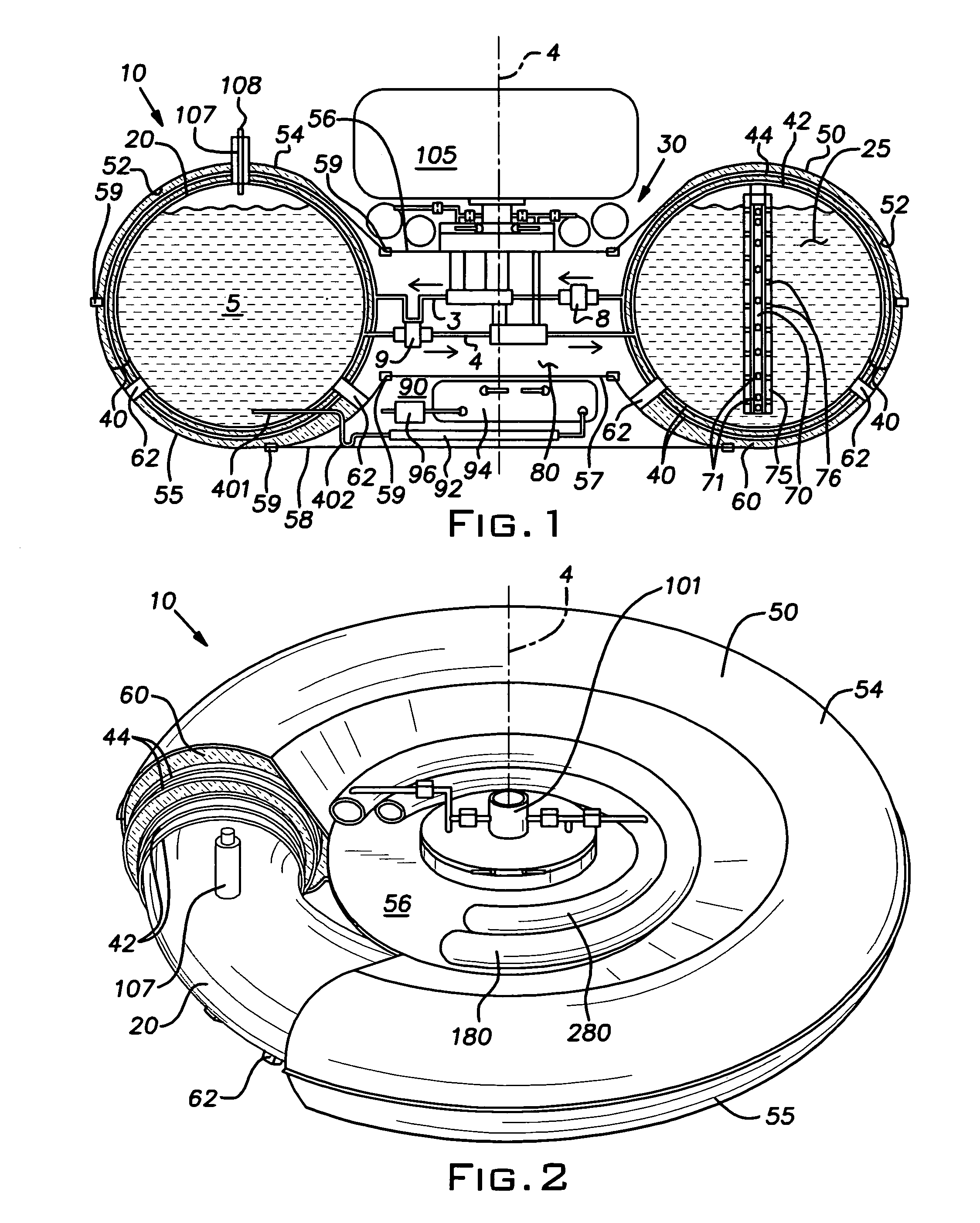No-vent liquid hydrogen storage and delivery system
- Summary
- Abstract
- Description
- Claims
- Application Information
AI Technical Summary
Problems solved by technology
Method used
Image
Examples
Embodiment Construction
[0021] As used herein, when a range such as 5 to 25 (or 5-25) is given, this means preferably at least 5, and separately independently, preferably not more than 25. Unless otherwise specified, all components described herein are made from conventional materials in a conventional manner.
[0022] A liquid hydrogen storage and delivery system 10 is provided that is cooled via an orifice pulse tube refrigerator. In its broadest aspect, the invention includes a liquid hydrogen storage vessel 20, an orifice pulse tube refrigerator (OPTR) 30, and a cooling system 40 coupled to the OPTR 30 and adapted to cool the storage vessel 20, or to shield it from ambient thermal energy. In the preferred embodiment, the OPTR 30 has two cooling or refrigeration stages as more fully described below. The storage and delivery system 10 is suitable to be provided or incorporated into an automobile equipped with a hydrogen powered internal combustion engine, and / or a hydrogen powered fuel cell, to store liqui...
PUM
 Login to View More
Login to View More Abstract
Description
Claims
Application Information
 Login to View More
Login to View More - R&D
- Intellectual Property
- Life Sciences
- Materials
- Tech Scout
- Unparalleled Data Quality
- Higher Quality Content
- 60% Fewer Hallucinations
Browse by: Latest US Patents, China's latest patents, Technical Efficacy Thesaurus, Application Domain, Technology Topic, Popular Technical Reports.
© 2025 PatSnap. All rights reserved.Legal|Privacy policy|Modern Slavery Act Transparency Statement|Sitemap|About US| Contact US: help@patsnap.com



